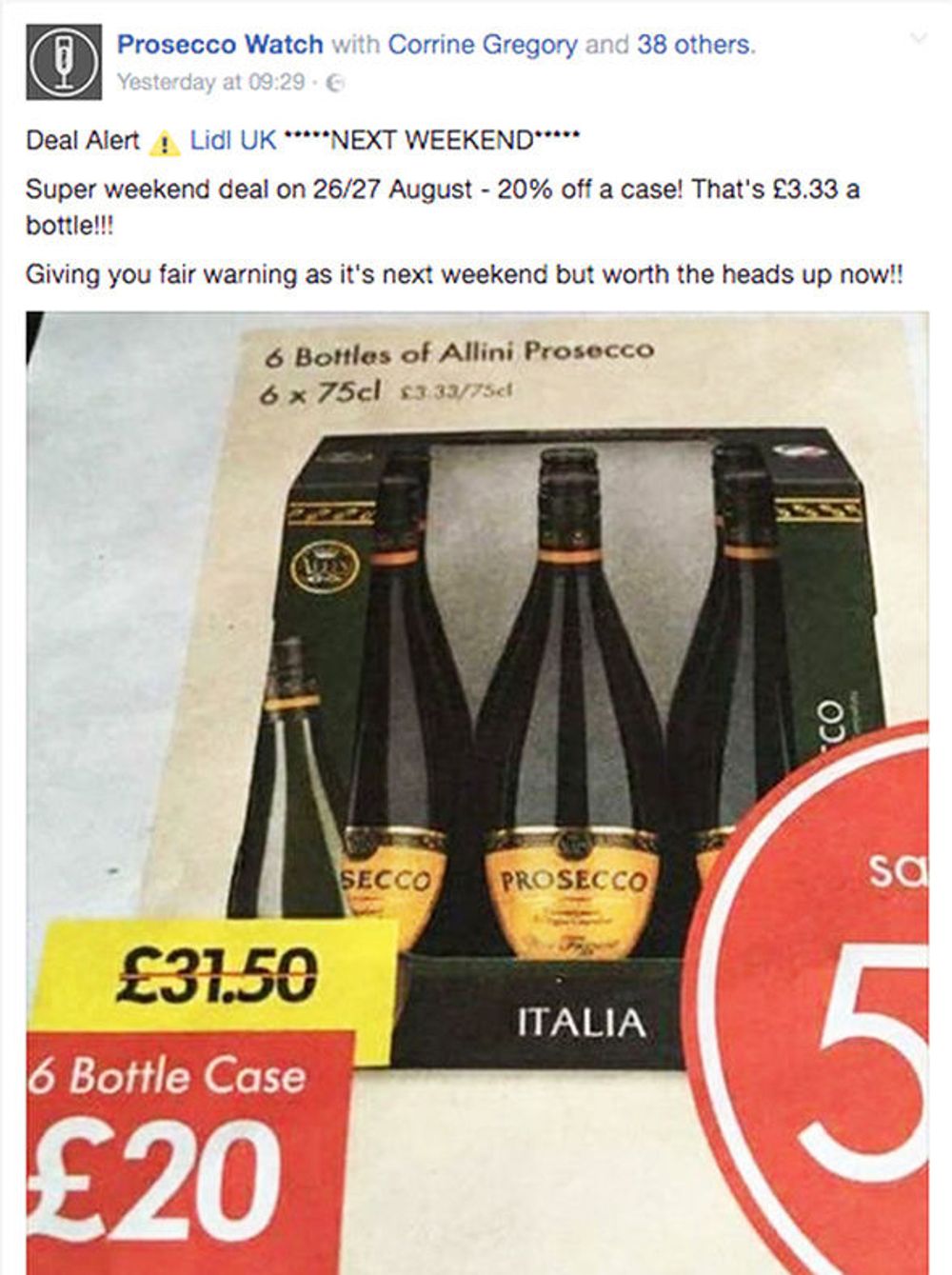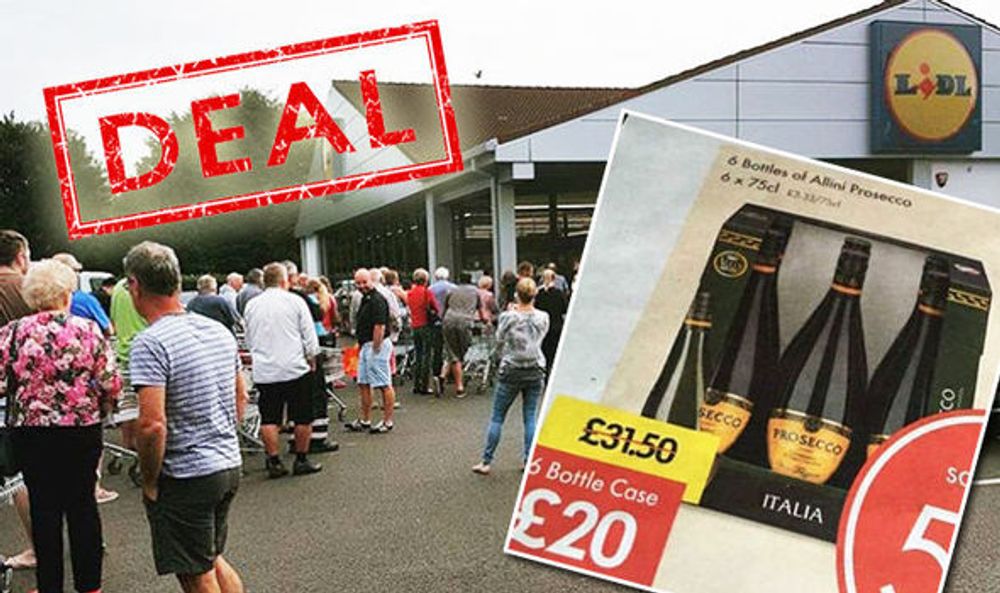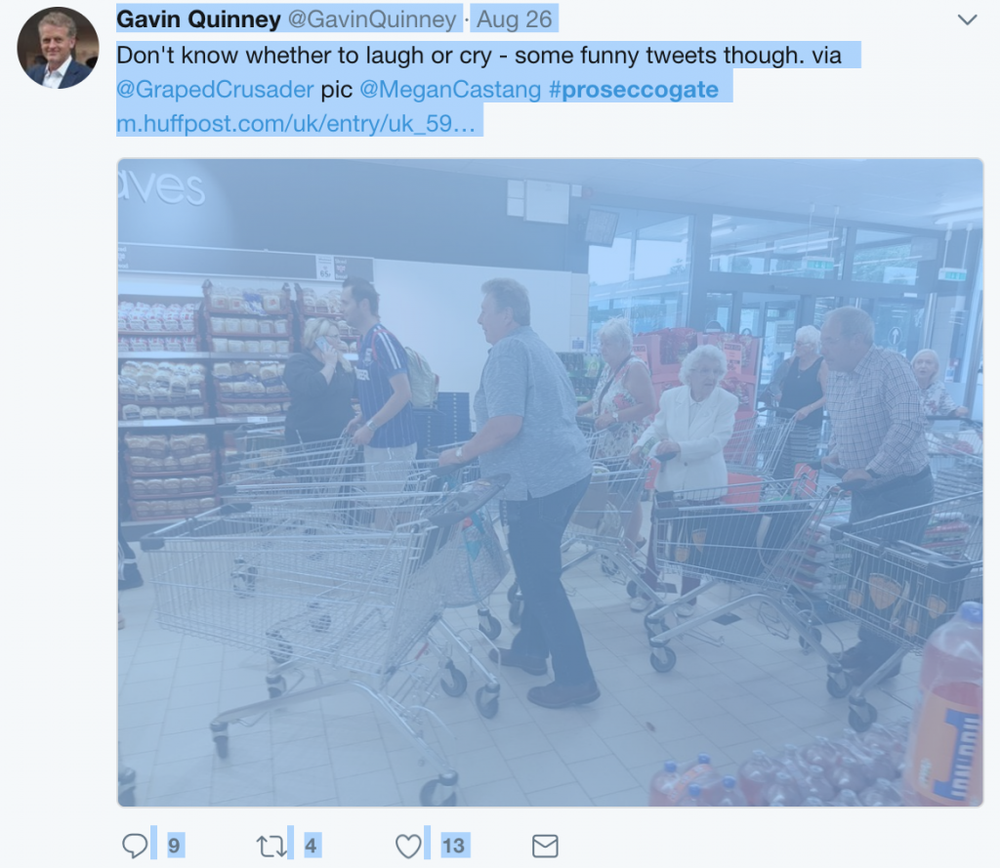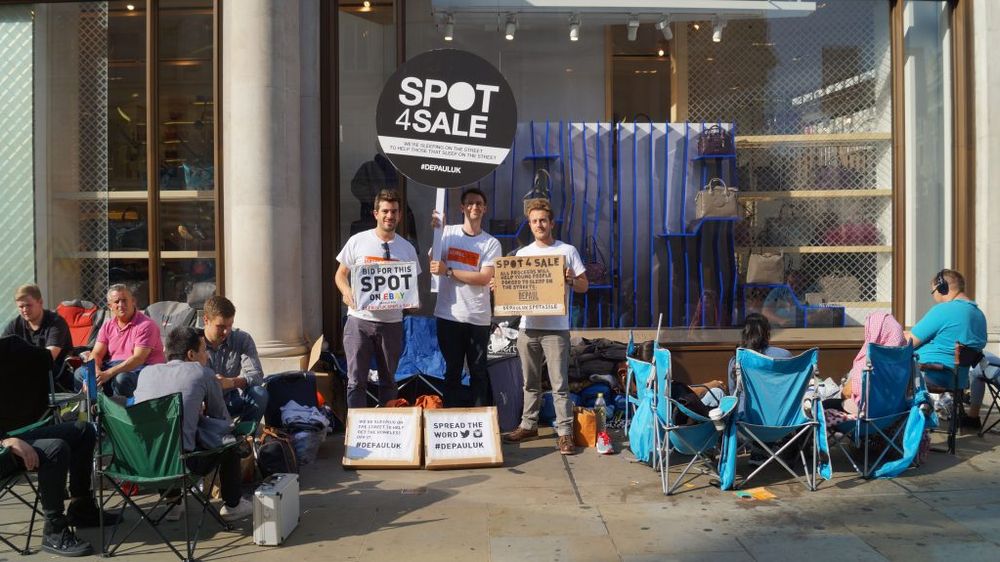The fallout from Lidl’s six for £20 Prosecco deal went way beyond a few thousand disgruntled and thirsty shoppers that missed out on the deal. It can also teach us a lot, says Joe Fattorini, about how the wine trade and drinks industry looks at marketing and promotion in general.

If something has a hashtag, it means everyone is talking about it. Or else it’s August and there’s nothing more important to talk about. And so it is (and was) with August bank holiday’s #proseccogate.
The facts of #proseccogate are simple. Lidl had a Bank Holiday promotion of six bottles of Prosecco for £20. In the journalese that followed, “hundreds give up their bank holiday lie-in” to queue at stores. But “chaos ensued” as “shoppers reacted with fury” and “disappointment” when the deal sold out within “hours”, “minutes” or “immediately” depending on who you read.
The initial response of the wine trade on social media was to ask if anyone had tried the Prosecco and had a tasting note. But eventually it flipped to the economics and ethics of the deal. Yet through all the discussions, people missed something important. The point.

A deal good enough people out of bed at dawn…
Why #proseccogate worked
Because #proseccogate was not, as everyone seemed to believe, a flunked sales promotion. It was an advertisement. And a good one too. If you missed this, here’s how.
According to legendary adman (and winemaker) Sir John Hegarty, good ads are 80% creativity and 80% execution. Let’s start with the execution. I am indebted to those who painstakingly calculated the costs to Lidl of their deal. If you’d like to play hide and seek with your will to live, the details are in threads on Twitter and Facebook. But in short, once Lidl covered duty and VAT, and with a limited numbers of cases per store, #proseccogate probably cost Lidl about £180,000. That’s assuming nobody who came to their stores for the deal bought anything else.
Put that in context. A quarter page in The Sun costs £23,000. A two-week 48 sheet poster is about £500. Thirty seconds during Lorraine on ITV is £3,000. So Lidl bought coverage in every paper and across social media for the cost of a one-day campaign across the UK’s national and regional papers. Or a two-week poster campaign in Yorkshire and the North East. Or a week of ads on Lorraine. Or half a week of ads, once they’d paid for an agency to create the ad.

The tweet that started it…@GavinQuinney of @ChateauBauduc started the wine trade debate on Twitter with this initial post
Excellent execution then. But #proseccogate had even better creative. The central complaint of colleagues seems to be that this deal “pissed off consumers”. (There were one or two who suggested that the main problem was that it would erode margins at competitors. If you really believe that buyers and marketers at a discount retailer should be thinking “we mustn’t do anything to erode competitors’ margins” you need your bumps felt.)
It’s true. It did piss off consumers. And that may feel alien to the way you work. But it was precisely the point of #proseccogate that “Shoppers from around the country shared images of the huge queues online” (The Express). And that there would be “chaos at stores across the country… as thousands of people tried to take advantage of the prosecco bargain on sale” (The Hull Daily Mail).
All about emotion

Advertising so good you would queue for it…
Great ads don’t work with logical, reasoned discussions of benefits. They work with emotional appeals. These appeals work subconsciously on your primitive, lizard brain. Among them are “scarcity appeals”. This places #proseccogate alongside teenagers queuing for £95 Bathing Ape T-shirts, tech-funksters camping out for iPhones and idiots spending Christmas Day in a sleeping bag outside Harrods.
Brilliantly, the most important actors here are the irate shoppers. And Bathing Ape, Apple, Harrods and Lidl don’t have to pay them for their time. Yes, they may have been pissed off. But those who queued for the deal are also those most likely to come back. And they weren’t the target of #proseccogate anyway.
So who was? The answer gained rather less attention in newspapers on August 22. According to research from Kantar Worldpanel, Lidl gained 0.7% point of market share in the last year. This took it above Waitrose and into the UK’s top seven supermarkets for the first time. The real targets of #proseccogate were comfortably in their John Lewis beds reading the news on their Kindles on Bank Holiday Monday. Their rational, middle class brains chortled at the images of scrapping Prosecco fans. While their lizard brains associated Lidl with scarcity so attractive, people fight to enjoy it.
What to learn from #proseccogate
#proseccogate was not a flunked sales promotion. It was an ad campaign straight out of the playbook of Edward Bernays a century ago. The reason so few people in the wine business saw #proseccogate for what it was is one of the biggest problems facing our industry. If you wondered who Edward Bernays was there a moment ago, and you work in wine marketing, you have some catching up to do. He was doing this kind of thing in the 1920’s. Claude C Hopkins’ “Scientific Advertising” was written in 1923 and covers similar ground. “Nobody should be allowed to have anything to do with advertising until he has read this book seven times” said David Ogilvy (you need to know who he is too).
You can even now download the book for free. And get yourself up to date on with a few modern classics like Robert Cialdini’s “Persuasion” to mug up on persuasive appeals like scarcity.
But whatever you do, don’t believe everything your colleagues write about wine marketing on Twitter.
- What do you think? If you would like to respond to Joe and give your views on #proseccogate and how wine is promoted and sold then contact Richard Siddle at richardsiddle@btopenworld.com.








































